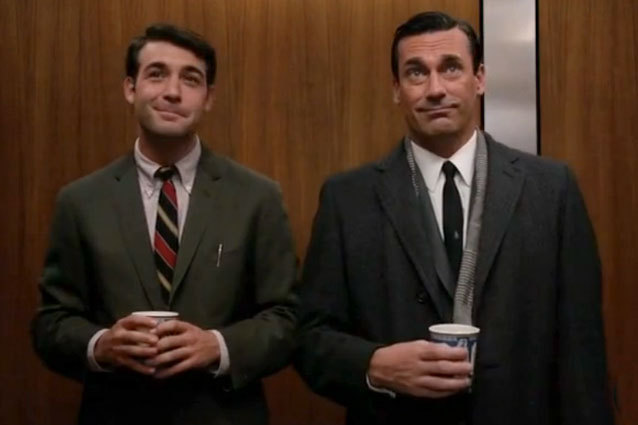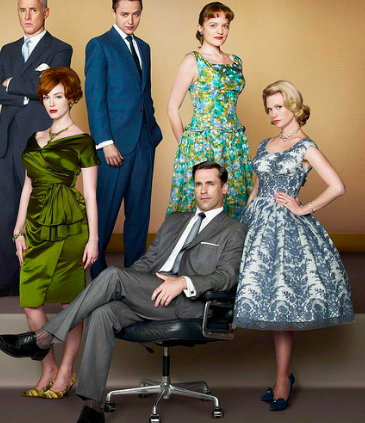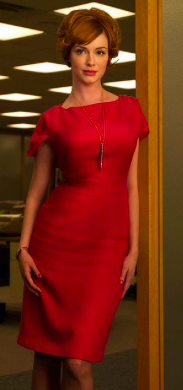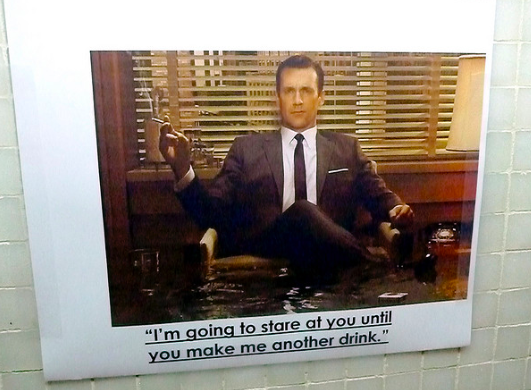Author: Phoebe Goldenberg
With its sleek cast of characters, racy plot, illicit boozing, schmoozing and sexing, AMC’s primetime hit, “Mad Men,” is reviving America in the 1960s to 1970s as a cultural goldmine. It is a show that satisfies the modern appetite for all things provocative, seductive and unpredictable–but have the show’s creators sacrificed historical accuracy for more drama and more viewers? As it turns out, they haven’t had to–not that much anyway. The show has been applauded by historians and Gen Xers alike for its authentic representation of its era’s time and culture. Yet there is no doubt that some details–both minor and glaring–have been distorted sometimes unintentionally, and other times, for the sake of show biz.
Here is a look at what “Mad Men” got right and wrong:
Don Draper
Although Don Draper is not based on a historical figure, his character is a compilation of several real life ad men. His namesake, Draper Daniels, who is best known for the iconic Marlboro Man campaign of the 1950s was also an infamous womanizer and smooth talker. The father of modern advertising, Albert Lasker, invented the emotionally persuasive form of advertising that Don Draper frequently employs throughout the show. Lasker led Lucky Strike’s “toasted” campaign, which Don is credited with on the show. The TV character’s good looks and swagger are often compared to those of George Louis, who was known for his witty and personalized advertising strategies. However, in an interview, Louis says he was “more handsome than Don Draper” and refers to Draper as a “talentless bum.” Ironically, this sounds like something Don might say of himself.
Office Behavior
Although “Mad Men” captures both the personal and professional lives of its characters, the workplace itself seems to be the locus of drama—where drama begins, ends and plays out. According to Jane Maas, often called the “real life Peggy Olson,” the colleague to colleague affairs that are rampant on the show are no exaggeration. Standing up against bias in the workplace takes on added significance when considering the portrayal of ad men divorcing their wives and marrying younger colleagues, which sheds light on the challenges faced by housewives like Betty Draper, who were trapped in emotionally taxing marriages without financial independence.
The treatment of female employees on the show has been widely criticized for the narrow stereotypes it defers to. Peggy is the aggressive career woman. Joan, the sexual opportunist. And the secretaries are passive mannequins. However, the misogyny imbued in office culture is not an invention of the show but a reality of its historical context. “Mad Men” depicts a time before any law against sexual harassment existed–working women had limited resources to address these issues in their professional environment.
While the show carefully charts the journey of sexism in the workplace, it fails to properly address racism during that period. African-Americans faced even greater discrimination in the office than women did. According to Lola Cherson, the show’s introduction of Dawn, a black female secretary, in what would have been 1966 was premature by more than a few years. However, the absence of other black characters, aside from Carla the maid and Toni the Playboy Bunny, is a poignant and intentional reflection of the exclusion of blacks from mainstream society, especially the work place. Like African-Americans, Jews faced discrimination but their representation is mishandled by the show. Michael Ginsberg, with his cheap suits and heavy Brooklyn accent is a somewhat farcical representation of the Jewish ad man.
Drinks, Drinks, Drinks
If there’s one thing that the characters of “Mad Men” love more than scoring a big account, it’s drinking. In fact, the first scene of the premiere is set at a bar where Don Draper orders an old fashioned. Although it adds theatrical glamour, it’s hard to believe that any successful businessman could maintain their job (and dignity) while tossing back whiskey like water. As one might suspect, the show notably exaggerates the already notorious thirst of the Madison Avenue ad men. Although it was not unusual to drink three or so martinis at lunch, it was less common to find senior partners drinking in their office while on the job. That being said, drinking culture varied significantly from office to office. In fact, some ad agencies still have full bars in-house that are put to use on and off hours. Dale DeGroff, a former ad man and bartender, says that overall the show nails the nuances of the cocktails themselves from the liquor labels to the wine menus.
The Wardrobe
One of the show’s most endemic influences on the modern world is its revival of ‘60s and ‘70s fashion trends. Maybe people truly did dress better back then, because the skinny ties, wingtips, pearls, and shiny purses are spot on with current trends. The costumes are used not only to delight viewers but also to distinguish between the secretaries and the wives, the executives and the assistants, the progressives and the conservative ilk. That said, while Joan has become a style icon for contemporary viewers, her cocktail-esque office attire is the least authentic of the crew. She wouldn’t have been able to get away with a number of her cleavage-bearing getups.
The Lingo
It’s easy to forget that vocabulary has evolved enormously over the past five decades, even for the writers of “Mad Men.” For the most part, the script is attentive to the linguistic milieu of the era. When a slip up does sneak into the script, it is usually small enough to go unnoticed by the average viewer. For example, Lane Pryce uses the word “euthanize” well before it was popularized as a verb. Even as a verb it would have taken the form “euthanatize,” which is no longer used today. In addition to some modern idioms, such as a “tough act to follow,” the industry jargon is where the language blunders occur most frequently. While anachronistic phrases like “keep a low profile” and “level the playing field” make the show’s dialogue more comfortable for viewers, they’re out of place for that time.
Interestingly, one linguist noted that the phrase “I need” is used more frequently in “Mad Men” than it would have been during that time period. Although this may seem like a trivial error at first, it has deeper implications about the evolution of American values. The increasing popularity of the phrase overtime suggests that Americans of the ‘60s were perhaps less entitled.

The character on the right, Bob Benson, is a closeted gay man on the show. Many criticize “Mad Men” for its lack of LGBTQ characters and ignoring LGBTQ struggles in the ‘60s.
Why Does Accuracy Matter?
Overall “Mad Men” respects historical accuracy more than most modern television shows. But does it really matter? Why do we care that Don Draper was downing Field’s beer before it would have been available in the United States? Why do historians spend weeks analyzing old books, speeches and scripts to discover a word or two out of place?
When we allow misrepresentations of the past to proliferate and spread through our mass media sources, we risk changing history itself. The millions of people who tune in to watch “Mad Men” every week are more than one-time viewers. The show propagates memories and fictional voices that become vessels of–sometimes false–history carried into the future.
Comment |

 Share on Facebook
Share on Facebook
 Tweet
Tweet
 Add My Story
Add My Story










